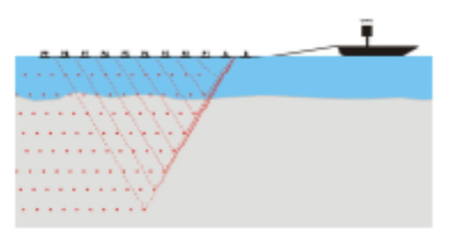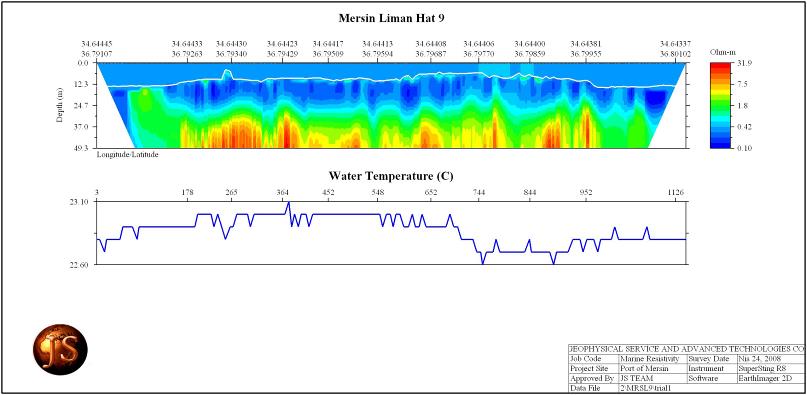MARINE SSR8 RESISTIVITY |


|
Current is injected into the water every 3 seconds and 8 potential differences is measeured simultaneously as the boat moves forward. |
|
Introduction As part of the equipment MERSIN PORT Survey project, Advanced Geosciences, Inc. (AGI) participated with its SuperSting Marine, towed Resistivity imaging system. A preparation survey was performed on may 10 and a final survey, of predetermined lines 1-11, was performed on june 20. Figure shows the total available resistivity data from the workshop. This report only treats resistivity data collected along lines 1 4 (see Figure 2.) Contact AGI for any other data collected during the workshop. Instrumentation and survey design The survey was undertaken using the AGI SuperSting Marine system and a streamer with 11 electrodes at 10m., 20m.,and 40m. intervals. The SuperSting instrument has 8 receivers and a transmitter, making it possible to record eight readings simultaneously as the current is injected through the two current electrodes. The streamer was towed at the surface of the water in such a way that the electrodes were totally submerged below the surface at all times. The two electrodes nearest the boat were used for current injection and the other nine electrodes were used for potential measurements. An electric current was injected into the water approximately every 3 seconds through the two current electrodes. The resulting eight potential differences, between the following 11 electrodes, were simultaneously measured and recorded. The survey array could be considered a moving dipole-dipole electrode array. A longer streamer with 10,20,40 meters electrode spacing and an expected depth penetration of 20,40,80 meters was available. A GPS receiver was placed on the boat and the SuperSting was time synchronized with the GPS,making it possible to later on, calculate the location of each electrode, assuming that the electrode cable trailed the boat track.
|







|
A fathometer was time synchronized with the GPS and used for entering a priori information about water depth during the inversion modeling. The fathometer also had a sensor which records the near surface water temperatures. |


|
Home |

|
About Us |

|
Contact Us |

|
Project |

|
Referances |

|
Certificate |
|
Back Survey |

|
Equipments |

